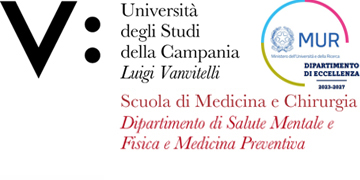Martina MELILLO
Insegnamento di SCIENZE TECNICHE MEDICHE APPLICATE III
Corso di laurea in LOGOPEDIA (ABILITANTE ALLA PROFESSIONE SANITARIA DI LOGOPEDISTA)
SSD: MED/50
CFU: 2,00
ORE PER UNITÀ DIDATTICA: 18,00
Periodo di Erogazione: Primo Semestre
Italiano
| Lingua di insegnamento | ITALIANO |
| Contenuti | I contenuti del presente insegnamento riguardano, nell'ambito della semeiotica, la valutazione, il riconoscimento e i principali spunti di trattamento dei Disturbi del Neurosviluppo descritti nel DSM 5. Per ogni macroarea sono stati introdotti i principali strumenti diagnostici e valutativi che il logopedista deve conoscere in maniera approfondita e quali sono i segni e sintomi caratteristici di ogni patologia affrontata. |
| Testi di riferimento | - Consensus Conference sul disturbo primario del linguaggio, a cura di Clasta e FLI, 2019 |
| Obiettivi formativi | Al termine del corso, lo studente dovrà: |
| Prerequisiti | Lo studente dovrà possedere le conoscenze base dei disturbi della comunicazione e del linguaggio, nonché aver superato, sulla base della propedeuticità come deliberato dal consiglio di CdS, l'esame di S.T.M.A. II. |
| Metodologie didattiche | 6 Lezioni frontali suddivise, da tre ore ciascuna, suddivise nei seguenti moduli didattici, per un totale di 18 ore: |
| Metodi di valutazione | La verifica dell'apprendimento avverrà tramite prova orale, la quale: |
| Altre informazioni | Sono previsti materiali di supporto online, oltre ai testi suggeriti per lo studio. Tali materiali sono scaricabili gratuitamente: |
| Programma del corso | Corso di laurea triennale in Logopedia - Programma STMA III |
English
| Teaching language | Italian |
| Contents | The contents of this teaching concern, in the context of semiotics, the evaluation, recognition and main treatment ideas of the Neurodevelopmental Disorders described in the DSM 5. For each macro area, the main diagnostic and evaluation tools that the speech therapist must know in in-depth manner and what are the characteristic signs and symptoms of each pathology addressed. |
| Textbook and course materials | - Consensus Conference on developmental language disorder, organized by Clasta and FLI, 2019 |
| Course objectives | At the end of the course, the student will have to: |
| Prerequisites | The student must have basic knowledge of communication and language disorders, as well as having passed the S.T.M.A. II exam on the basis of the preparatory requirements as decided by the CdS council. |
| Teaching methods | 6 frontal lessons divided into three hours each, divided into the following teaching modules, for a total of 18 hours: |
| Evaluation methods | Verification of learning will take place through an oral test, which: |
| Other information | Online support materials are provided, in addition to suggested texts for study. These materials can be downloaded for free: |
| Course Syllabus | Three-year degree course in Speech Therapy - STMA III Program |








